Session I: FHE for Future Factory
Dr. Robert Smith
Technical Fellow
Boeing Research & Technology
 Dr. Robert A. Smith is a Boeing Technical Fellow with more than 20 years of experience with the Boeing Company and a NextFlex Consortium Fellow. In his current role with Boeing Research and Technology, his research focus areas are optical and radio frequency remote sensing, millimeter wave sensing technology, RFID, component fabrication utilizing additive and subtractive technology for SWAP constrained platforms and advancing Flexible Hybrid Electronic (FHE) devices for Asset Tracking, Health Monitoring and Antenna applications. Robert has been the program manager and principal investigator for multiple advanced technology research projects and multiple remote sensing government contracts for Boeing Defense Systems including missile defense, international space station, satellite systems and commercial space ventures. He has 15 patents including 2 foreign patents and was the recipient of a Boeing Special Invention award in 2010.
Dr. Robert A. Smith is a Boeing Technical Fellow with more than 20 years of experience with the Boeing Company and a NextFlex Consortium Fellow. In his current role with Boeing Research and Technology, his research focus areas are optical and radio frequency remote sensing, millimeter wave sensing technology, RFID, component fabrication utilizing additive and subtractive technology for SWAP constrained platforms and advancing Flexible Hybrid Electronic (FHE) devices for Asset Tracking, Health Monitoring and Antenna applications. Robert has been the program manager and principal investigator for multiple advanced technology research projects and multiple remote sensing government contracts for Boeing Defense Systems including missile defense, international space station, satellite systems and commercial space ventures. He has 15 patents including 2 foreign patents and was the recipient of a Boeing Special Invention award in 2010.
“Flexible Hybrid Electronics for Production Efficiencies”
Abstract: Flexible Hybrid Electronic (FHE) systems are being evaluated for aircraft production and test applications that will interact with factory Internet of Things (IoT) architectures that are being implemented for efficiency improvements in production facilities. Deployment of wireless systems is an enabler for a reduction is wires and cables for test and production which translates to simpler integration and reduced test planning and execution. Deployment in the production environment enables real time monitoring of assets for location and health and provides ubiquitous data collectors to provide meaningful data analytic solutions. The information presented will cover FHE developments on four NextFlex consortium funded efforts and the current status of a IoT enabled sensor system. The usefulness of the new technology for acquisition of data that is useful for aircraft ground operations and sensor systems that enable production efficiencies will be addressed.
Wilfried Bair
VP Engineering
NextFlex
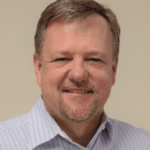 Wilfried Bair leads the system level project team for NextFlex for Medical, Industrial, Automotive and Aerospace/Defense applications, from system hardware and software design, to prototyping, creating pathways for production ramp and transfer to high volume contract manufacturers.
Wilfried Bair leads the system level project team for NextFlex for Medical, Industrial, Automotive and Aerospace/Defense applications, from system hardware and software design, to prototyping, creating pathways for production ramp and transfer to high volume contract manufacturers.
Prior to joining NextFlex, Wilfried worked on leading edge process development for specialty semiconductors, including: development of the first volume production equipment and process for 50g MEMS sensors (1992), the first SOI bond process and equipment (1996), the smallest non-contact hall effect sensor on chip (2002) , the first digital X-ray imaging ASIC (2004), the first high density TSV based CMOS image sensor (2007), the first high volume ultrathin wafer carrier process and equipment (2009), and the first panel level fan-out process (2015).
Wilfried holds advanced degrees in Manufacturing and Production Planning Systems, Organizational Development, and International Marketing from the University of Linz in Austria.
Dr. Nancy Stoffel
Flexible Hybrid Electronics Leader
GE Global Research
 Dr. Nancy Stoffel works at GE Research, and is currently the GRC Mission Leader for Flexible Hybrid Electronics and is engaged in several projects in wearable sensing for healthcare and worker safety, and industrial asset monitoring. She has 20+ years of experience in materials and process development in the electronics packaging field in both technical and managerial roles. Nancy was the Director of Microsystems Packaging at STC MEMS, and also held technical and management roles at Xerox, and IBM in the areas of materials and process development for microsystem, microfluidics, optoelectronics and electronic packaging. She is active in a number of professional and educational organizations including the IEEE ECTC Executive Board, the MRS Society Industrial Engagement Council, Cornell University Center for Materials Research and Cornell’s Materials Science Department Advisory Board. Dr. Stoffel received a PhD from Cornell in Materials Science.
Dr. Nancy Stoffel works at GE Research, and is currently the GRC Mission Leader for Flexible Hybrid Electronics and is engaged in several projects in wearable sensing for healthcare and worker safety, and industrial asset monitoring. She has 20+ years of experience in materials and process development in the electronics packaging field in both technical and managerial roles. Nancy was the Director of Microsystems Packaging at STC MEMS, and also held technical and management roles at Xerox, and IBM in the areas of materials and process development for microsystem, microfluidics, optoelectronics and electronic packaging. She is active in a number of professional and educational organizations including the IEEE ECTC Executive Board, the MRS Society Industrial Engagement Council, Cornell University Center for Materials Research and Cornell’s Materials Science Department Advisory Board. Dr. Stoffel received a PhD from Cornell in Materials Science.
Session II: FHE for Next Generation Space
Philip R. Buskohl
Research Scientist
AFRL
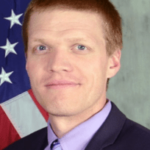 Philip R. Buskohl is a Research Mechanical Engineer in the Functional Materials Division at the U.S. Air Force Research Laboratory (AFRL). The Division delivers materials and processing solutions to revolutionize AF capabilities in Survivability, Directed Energy, Reconnaissance, Integrated Energy and Human Performance. He is currently a member of the Flexible Electronics research team at AFRL, where he provides mechanical analysis and design concepts for conformal and deformable electronics packaging. He received his PhD degree in Theoretical and Applied Mechanics from Cornell University in 2012.
Philip R. Buskohl is a Research Mechanical Engineer in the Functional Materials Division at the U.S. Air Force Research Laboratory (AFRL). The Division delivers materials and processing solutions to revolutionize AF capabilities in Survivability, Directed Energy, Reconnaissance, Integrated Energy and Human Performance. He is currently a member of the Flexible Electronics research team at AFRL, where he provides mechanical analysis and design concepts for conformal and deformable electronics packaging. He received his PhD degree in Theoretical and Applied Mechanics from Cornell University in 2012.
“FHE Materials and Design Tools for Physically Reconfigurable Platforms”
The interplay of physical structure and the configuration of electromagnetic (EM) elements is critical to the function and overall performance of antennas, frequency selective surfaces and other devices. Flexible hybrid electronics (FHE) are key enablers of tuning EM function through physical shape change, as the material sets provide the necessary electrical performance under a range of mechanical deformations. The AFRL Flexible Electronics research team is actively developing FHE material sets to broaden this performance envelope and developing computational tools to design reconfigurable structures to leverage them. The presentation will focus on our recent work on liquid metal for flexible interconnects, a lift-off strategy for flexible Gallium nitride RF components and a topology optimization design tool for origami-based deployment of space applications.
Dr. Christos Christodoulou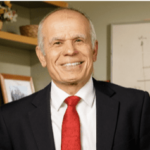
Dean at the School of Engineering
University of New Mexico
Consultant for Bluecom Systems & Consulting, LLC
Dr. Christos Christodoulou received his Ph.D. degree in Electrical Engineering from North Carolina State University in 1985. Currently, he is the Dean at the School of Engineering at the University of New Mexico and serves as a consultant for Bluecom Systems & Consulting, in Albuquerque, NM. He is one of the founders of COSMIAC (Research Center for Space Electronics at UNM) and served as a director of the center from 2012 to 2014. From 2009 to 2011 he received an Intergovernmental Personnel Act (IPA) assignment with the Air Force Philips Research Laboratory (AFRL) to help with their in-house telecommunication research.
He is an IEEE Fellow, a member of Commission B of the U.S. National Committee (USNC) for URSI, and a Distinguished Professor at UNM. He was appointed as an IEEE AP-Society Distinguished Lecturer (2007-2010) and served as an associate editor for the IEEE Transactions on Antennas and Propagation for several years. Since 2013 he has been serving as the series editor for Artech House Publishing company for the area of Antennas and Propagation.
He has given numerous keynote and invited talks all over the world, published over 550 papers in journals and conferences, written 17 book chapters, co-authored 8 books, and has several patents. Over his academic career he has served as the major advisor for 33 Ph.D., 73 M.S. Students, 9 Post octoral Fellows and received over $50M in funding as a PI and Co-PI from several federal agencies and industry.
“Optically Reconfigurable Smart Deployable Materials for Satellite Antenna Applications”
This presentation introduces a new approach for developing deployable, reconfigurable pixilated antenna technologies that can yield enhanced performance metrics such as reduced-weight, size and volume, frequency-reconfigurability, polarization reconfigurability and/or radiation pattern reconfigurability. The conductivity of Si or GaAs membranes can be altered by activating and deactivating a number of embedded VCSELs (Vertical-Cavity Surface Emitting Lasers) (Tawk, Albrecht, Hemmady, Balakrishnan, Christodoulou, “Optically Pumped Frequency Reconfigurable Antenna Design.” IEEE AWPL, 2010). When the VCSELs are not activated the entire Si or GaAs membrane behaves as a dielectric material and hence no scattering from an incoming radio source is generated keeping its Radar Cross Section (RCS) quite small. When the VCSELs are activated then any shape, pixilated antenna can appear on demand. That is a feature that our smart, optically reconfigurable membranes (F. Cavallo and M. G. Lagally, Soft Matter 6, 439-455, 2010) can provide. Moreover, machine learning algorithms, embedded on a small microprocessor can be integrated to control the activation of various VCSELs in these membranes. This approach results in a smart autonomous system that can self-adapt under various RF threats and environmental conditions. Furthermore, extending the light delivery to the smart membranes will allow the creation of reconfigurable data and power lines resulting in entire circuits that are smart and self-adaptive. This could be very advantageous in small satellites where one can create any reconfigurable circuit on-demand. Switching between multiple directional patterns, frequencies, and polarizations generating any antenna shape in microseconds can satisfy requirements of any mission on-demand.
Lunch Keynote
Beth Paquette
Aerospace Engineer
NASA Goddard Space Flight Center
Beth Paquette a mechanical engineer in the Parts, Packaging and Assembly Branch at the National Aeronautics and Space Administration (NASA) Goddard Space Flight Center (GSFC). She earned her Bachelor’s Degree in Mechanical Engineering from the University of Delaware, and Master’s Degree in Mechanical Engineering, with a specialization in electronics packaging, from the University of Maryland, College Park.
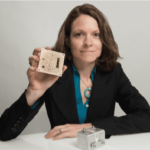 Beth gained experience in engineering from her time at AAI Corporation, Gichner Shelter Systems, Raytheon Integrated Defense Systems, and Refractory Composites, Inc. Her experience includes medical device manufacturing, high-temperature preform manufacturing, unmanned aircraft systems, electronic modular enclosure design, tooling design, and lead-free solder reliability testing.
Beth gained experience in engineering from her time at AAI Corporation, Gichner Shelter Systems, Raytheon Integrated Defense Systems, and Refractory Composites, Inc. Her experience includes medical device manufacturing, high-temperature preform manufacturing, unmanned aircraft systems, electronic modular enclosure design, tooling design, and lead-free solder reliability testing.
Beth’s career at NASA began in September 2010 and since then she has worked on ceramic column grid array (CCGA) assembly evaluations, the development of a NASA lead-free control plan, connector tooling design, electronic packaging design, integration & test, finite element analysis, solder reliability testing, and miniaturized electronics and instrument development.
“Aerosol Jet Printing on Rigid and Flexible Substrates for Space Applications”
Aerosol Jet Printing (AJP) will enable new detector assemblies that were not previously possible with traditional assembly processes. This technology has the potential to reduce mass and volume for fabrication and assembly of detector, instrument and electronics concepts by reducing trace widths down to 10 microns, printing on complex geometries, and allowing new concept production. This presentation summarizes efforts developing AJP for detectors and circuitry for space applications.
Andrew Rush
President & CEO
Made In Space
Andrew Rush is President & CEO of Silicon Valley-based Made In Space, Inc. He oversees the operations, business development, and strategy of Made In Space (MIS) as it continues to push boundaries of manufacturing technology in space, at sea, and in other extreme environments for government, commercial and defense customers. Andrew served as general counsel during MIS’s startup phase and became CEO in 2015. His vision of an 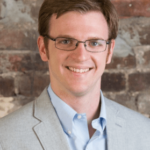 interplanetary existence for humanity guides MIS to drive forward offerings that enable life and work in space. As the first manufacturing company to operate in space, MIS is uniquely positioned to unlock the tremendous potential of the space economy by creating the tools, infrastructure and equipment necessary for humankind to build among the stars. Previously, Andrew worked in the intellectual property, business and ground crew/launch prep organizations at Masten Space Systems. Before becoming an attorney, he was a research assistant in a Solid State Physics Laboratory at the University of North Florida (UNF). He currently serves on the Physics Advisory Group at UNF. Andrew holds a B.S. in physics from UNF and a J.D. from Stetson University. He is also a recipient of the Young Alumni Achievement Award from UNF.
interplanetary existence for humanity guides MIS to drive forward offerings that enable life and work in space. As the first manufacturing company to operate in space, MIS is uniquely positioned to unlock the tremendous potential of the space economy by creating the tools, infrastructure and equipment necessary for humankind to build among the stars. Previously, Andrew worked in the intellectual property, business and ground crew/launch prep organizations at Masten Space Systems. Before becoming an attorney, he was a research assistant in a Solid State Physics Laboratory at the University of North Florida (UNF). He currently serves on the Physics Advisory Group at UNF. Andrew holds a B.S. in physics from UNF and a J.D. from Stetson University. He is also a recipient of the Young Alumni Achievement Award from UNF.
Session III: Conformal/Flexible Electronics and Antennas for Aircraft
Denis Cormier
AMPrint Center Director
Rochester Institute of Technology
Denis Cormier is the Earl Brinkman Professor at Rochester Institute of Technology where he also directs a New York State funded Additive  Manufacturing and Multifunctional Printing (AMPrint) Center. He has nearly 25 years of experience using a wide variety of metal, polymer, ceramic, and composite material additive manufacturing. The AMPrint Center that he directs is a multi-disciplinary entity that brings together faculty and students who focus on printing processes, functional material synthesis, and functional printing applications.
Manufacturing and Multifunctional Printing (AMPrint) Center. He has nearly 25 years of experience using a wide variety of metal, polymer, ceramic, and composite material additive manufacturing. The AMPrint Center that he directs is a multi-disciplinary entity that brings together faculty and students who focus on printing processes, functional material synthesis, and functional printing applications.
“Progress On Liquid Metal Droplet Jetting for Printed Electronics Applications”
This talk will focus on a promising liquid metal droplet jetting process that produces very low resistance traces suitable for high power electronics and related applications. The relationships between printing process parameters (jetting frequency, drop size, drop spacing, and substrate heating) and electrical performance will be discussed for both rigid and flexible substrates. The talk will also demonstrate the feasibility of producing true 3D electronic structures, including antennas.
Jeff Duce
R&D Design Engineer
The Boeing Company
Jeff Duce graduated from Utah State University in 2006 with a Bachelor’s degree in Mechanical Engineering, and from Central Washington University in 2015 with a Masters in Engineering Technology. While at Utah State, Jeff worked with the Get-Away-Special program which designed and build space flight experiments which flew on the Space Shuttle Endeavour, and later designed a built a materials science experiment which was placed on the outside of the International Space Station.
Jeff was hired by Boeing in 2006, into the Structures Technology organization in the Boeing Research and Technology (BR&T) business unit. Jeff has 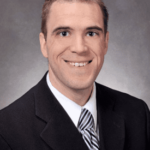 been tasked with developing technologies which enable structurally integrated systems using printed and direct-write technologies. Jeff has assisted in the development of several systems including a printed damage sensor for the 747-8 and continues to develop new applications in this field. Over the past 13 years, Jeff has worked to develop printed electronics capabilities for a wide array of platforms and customers within Boeing and under government contracts.
been tasked with developing technologies which enable structurally integrated systems using printed and direct-write technologies. Jeff has assisted in the development of several systems including a printed damage sensor for the 747-8 and continues to develop new applications in this field. Over the past 13 years, Jeff has worked to develop printed electronics capabilities for a wide array of platforms and customers within Boeing and under government contracts.
Jeff has been recognized as a Boeing Designated Expert in printed electronics and was the BR&T lead on the team which won the 2011 Boeing Engineering Team of the Year Award. Jeff has been awarded 18 patents from the US patent office with several other patents pending.
“FHE Qualifications for Aerospace Applications”
Printed Electronics technologies are ready to break into the Aerospace market, but what does it take to get into that market? We will explore some of the high level functional, quality, and certification requirements for FHE in aerospace.
Adam Ehrmantraut
Principal Electrical Engineer
Electronic Systems Division Group Lead
Aurora Flight Sciences – A Boeing Company
Mr. Adam Ehrmantraut is a Principal Electrical Engineer at Aurora Flight Sciences and an Electronics Systems Division Group Lead in Manassas, Virginia. He is the electrical system architect across multiple aircraft while also laying out the roadmap for future systems. He came to Aurora in 2007, performing in both direct design and leadership roles across multiple flight programs including SST, REXIS, Orion, Centaur, Chiron, AEH-1 OPA, Odysseus and a variety of SBIRs. During his tenure at Aurora he has designed, developed, tested and flown multiple designs ranging from printed circuit boards and harnessing up to full vehicle power, data, control and monitoring systems operating across multiple air platforms.
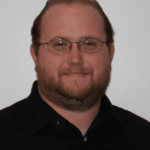 His first employment was with Lockheed Martin Tactical Avionics in Eagan, Minnesota as an electrical engineer for the F-35 Joint Strike Fighter program designing test equipment. Later he moved into the Internal Research and Development (IRaD) Group and spent several years in UAV systems development and test. While in IRaD he was the primary electrical designer for Sky Spirit 1, 2 and the SARA project along with support roles on several other systems. Mr. Ehrmantraut then moved back into the F-35 program as an electrical engineer, working on the Integrated Core Processor and FPGA repackaging efforts.
His first employment was with Lockheed Martin Tactical Avionics in Eagan, Minnesota as an electrical engineer for the F-35 Joint Strike Fighter program designing test equipment. Later he moved into the Internal Research and Development (IRaD) Group and spent several years in UAV systems development and test. While in IRaD he was the primary electrical designer for Sky Spirit 1, 2 and the SARA project along with support roles on several other systems. Mr. Ehrmantraut then moved back into the F-35 program as an electrical engineer, working on the Integrated Core Processor and FPGA repackaging efforts.
Mr. Ehrmantraut received his Bachelor’s of Science in Electrical Engineering from Kansas State University in 2003 and is a United States citizen. He currently holds six patents and is in process with several more.
“Large Scale Flex Harnessing for Aircraft”
Electrical Wire Harnesses take up a significant portion of aircraft dry weight and have proven resistant to automation. White-wire harnessing technology requires multiple touches per circuit, is piece part intensive, and has a shallow unit cost reduction with quantity. There have been several attempts to replace current harnessing methods such as Ribbonized Organized Integrated (ROI) and small scale flex harnessing that have shown limited success. For future aircraft systems a better harnessing system is needed to reduce weight, complexity, touch labor and cost. A new harnessing system, Large Scale Flex (LSF), has been in development that significantly improves on white-wire technologies.
LSF expands on current flexible printed circuit board technologies with harnessing up to 100’ long. LSF harnesses contain Discrete and Analog I/O signals along with matched impedance serial and 270VDC power. It is built using automated process with an 80% reduction in touch labor. Built cables show a 70-90% reduction is data cable weight and a 10-20% reduction in power cable weight. LSF cabling inherently has a high surface to volume ratio allowing for significantly better thermal rejection and increasing power cable weight reduction to over 50% in high altitude and high accepted loss scenarios.
LSF does require changes to current harness design practices and architectures along with the formation of new design standards but the increase in both technical performance measures and production value holds promise. LSF’s costing versus volume profile follows an automated process which is critical as aviation becomes more personal, such as Air Taxi, and the vehicle volume increases.
The talk will cover the limitations of white-wire harnessing systems, what LSF is and how it remedies white-wire harnessing deficiencies. Additionally, the costing profile of white-wire versus LSF will be discussed.
John Crumpton
Technical Specialist
DuPont Advanced Materials
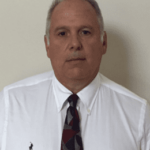 As Senior Technical Specialist, Mr. Crumpton is responsible for providing technical support to DuPont’s Printed Electronic and Micro Circuit materials offerings. He has worked for DuPont Electronics for the past 33 years and has a Degree in Microelectronics from Durham Technical Institute.
As Senior Technical Specialist, Mr. Crumpton is responsible for providing technical support to DuPont’s Printed Electronic and Micro Circuit materials offerings. He has worked for DuPont Electronics for the past 33 years and has a Degree in Microelectronics from Durham Technical Institute.
“In-Mold Electronics: An Enabling Technology”
In-Mold Electronic (IME) technology reduces weight and saves on assembly cost by printing multilayer touch circuitry within compact spaces. And because these new electronic inks work with existing in-mold decorative (IMD) processes, there’s no need for costly re-tooling. Now you can create products with greater visual appeal, fewer PCB assemblies, and performance – all at the same time. Functionality including capacitive touch, lighting, antenna, heating and more can easily be incorporated into designs and fully encapsulated in a protective layer of plastic. Learn how DuPont has utilized its experience in electronic inks to create the newest In Mold Electronic products that can help you meet consumer needs for exciting 3D designs.